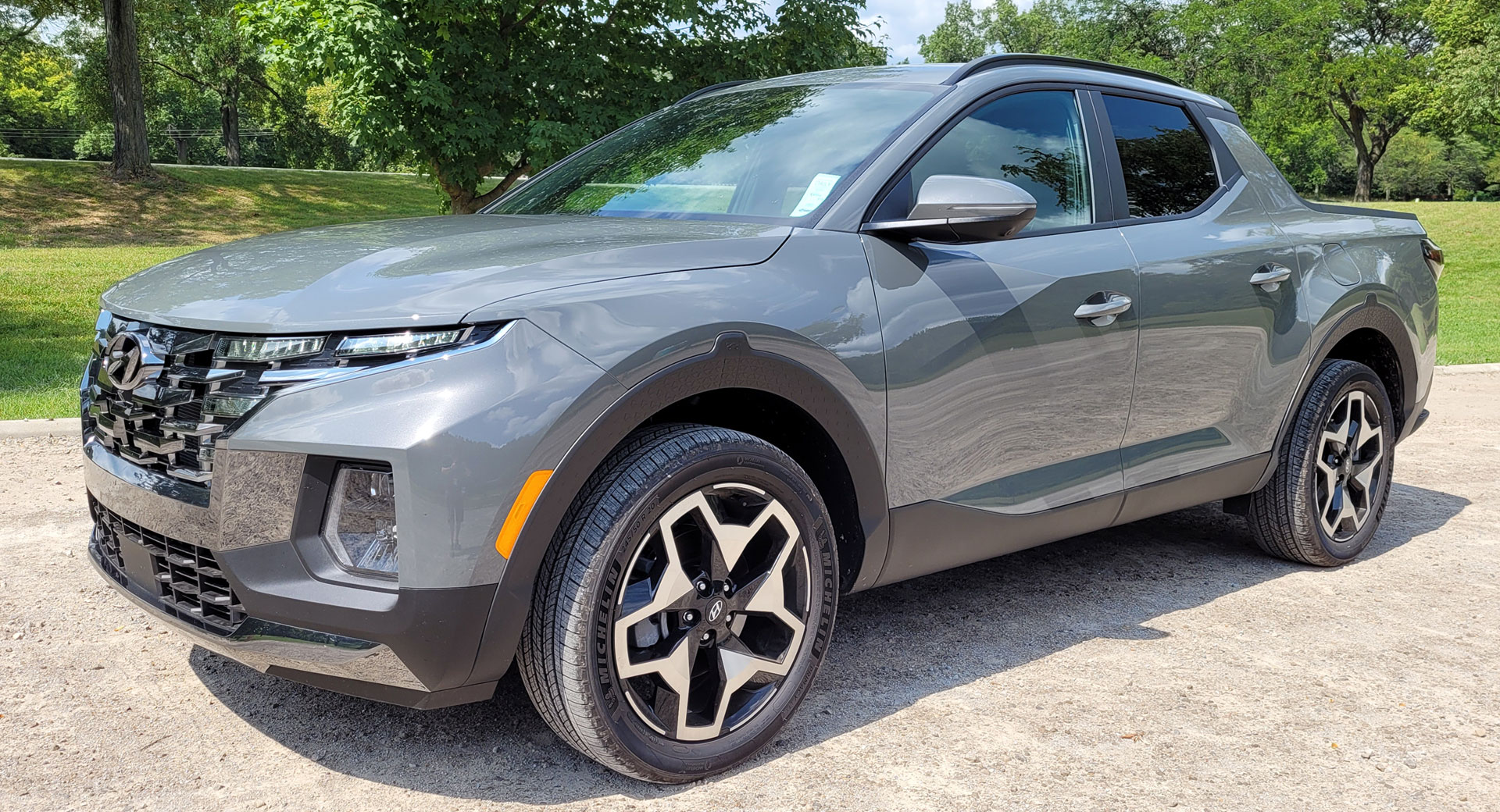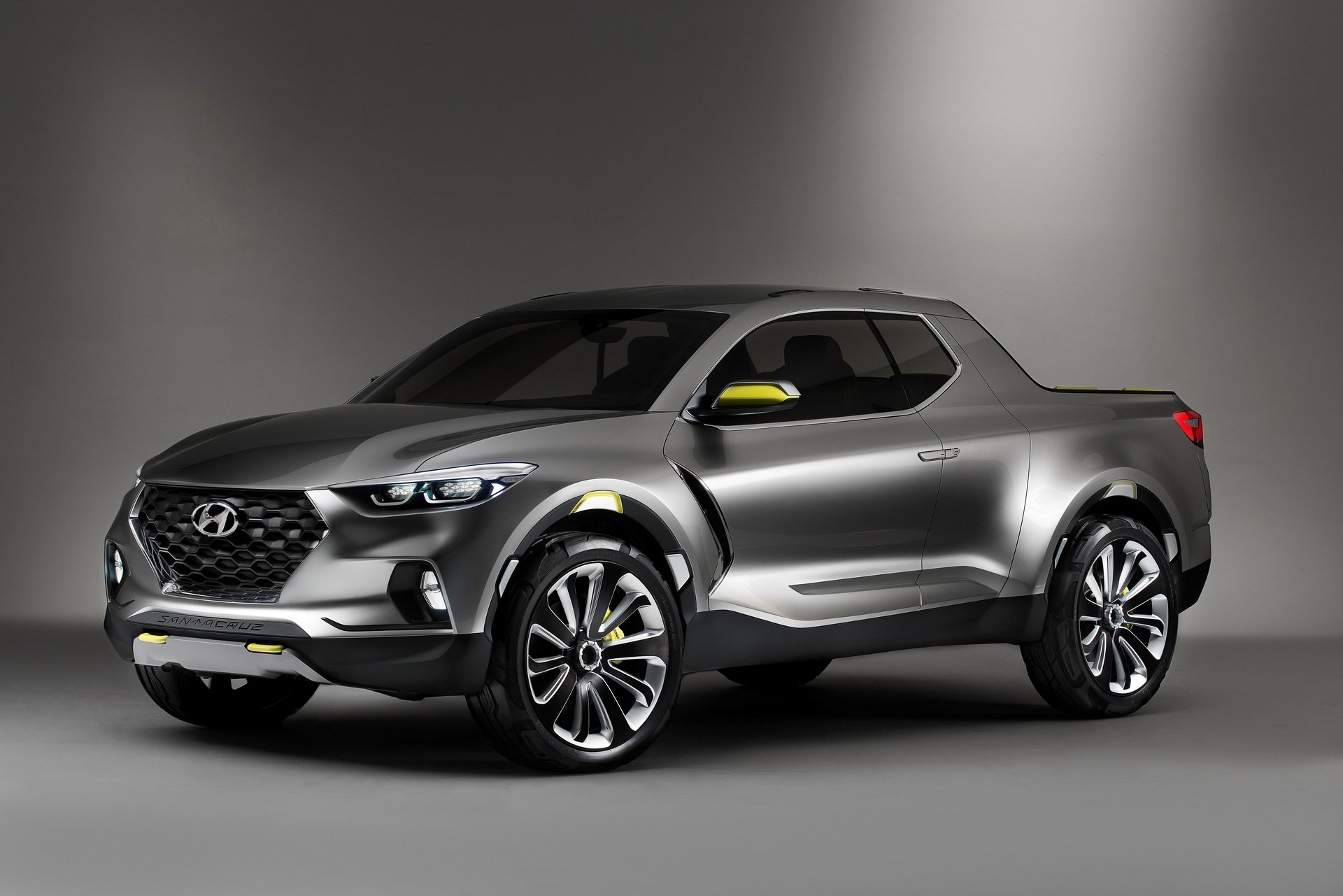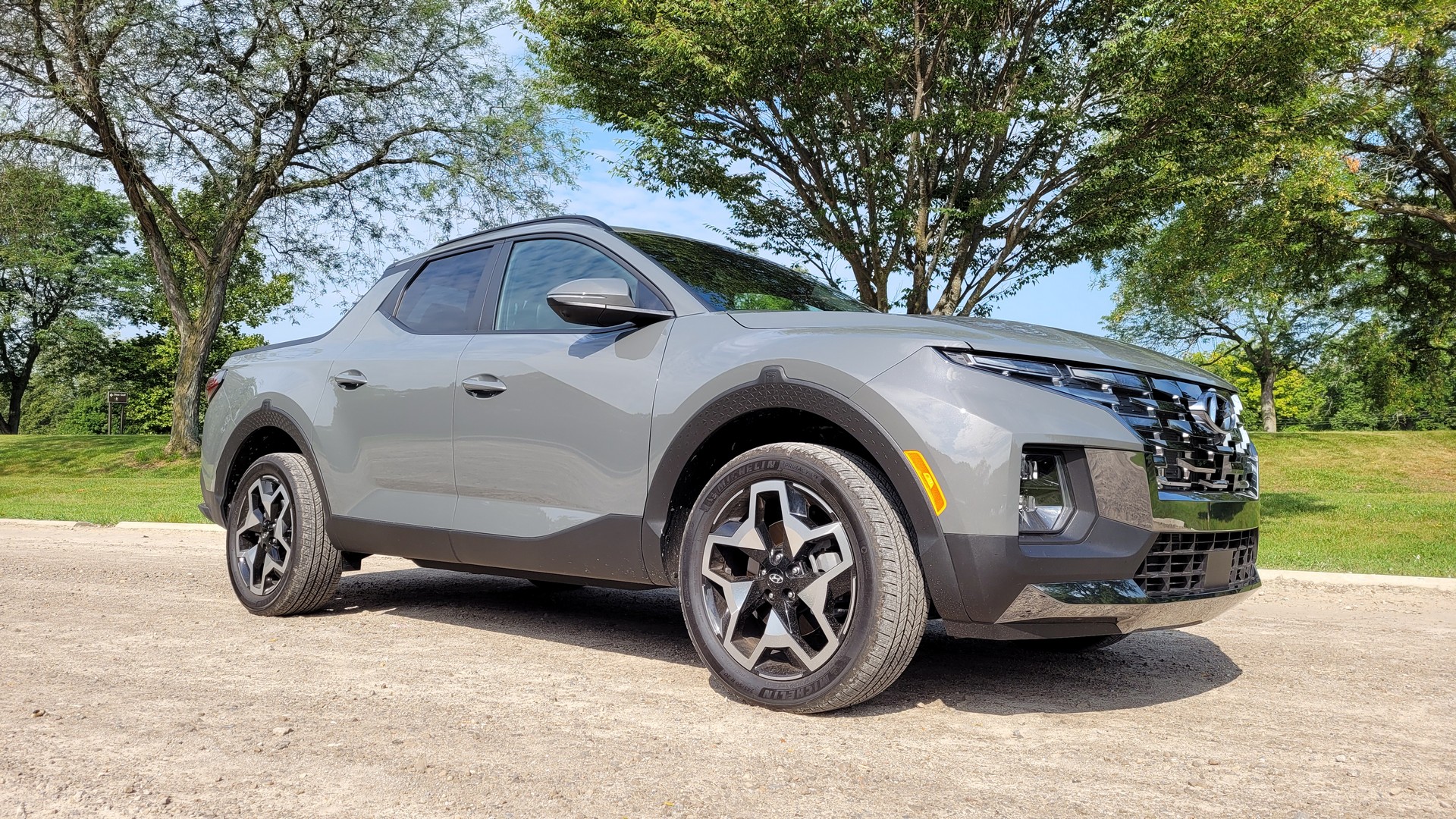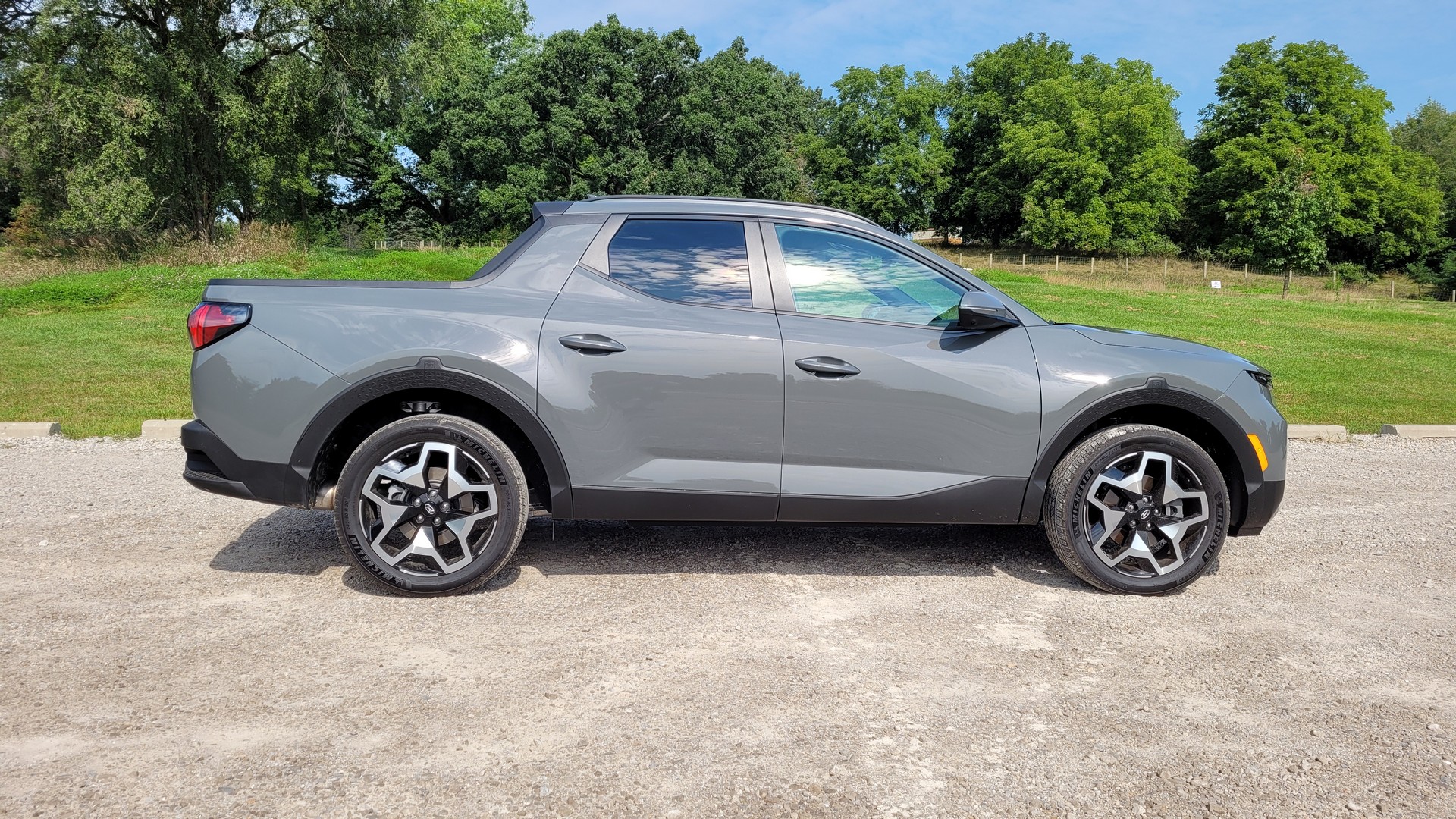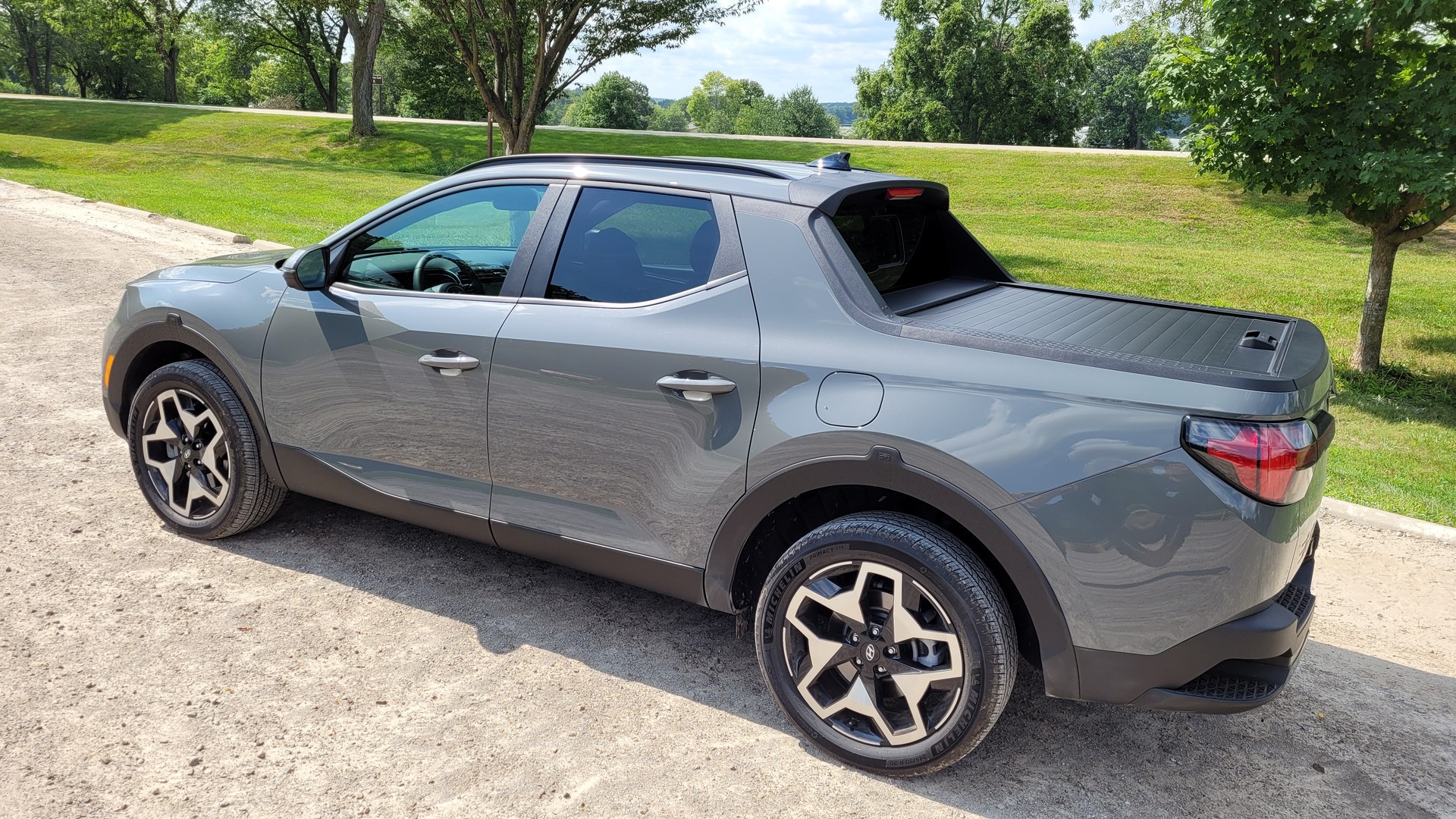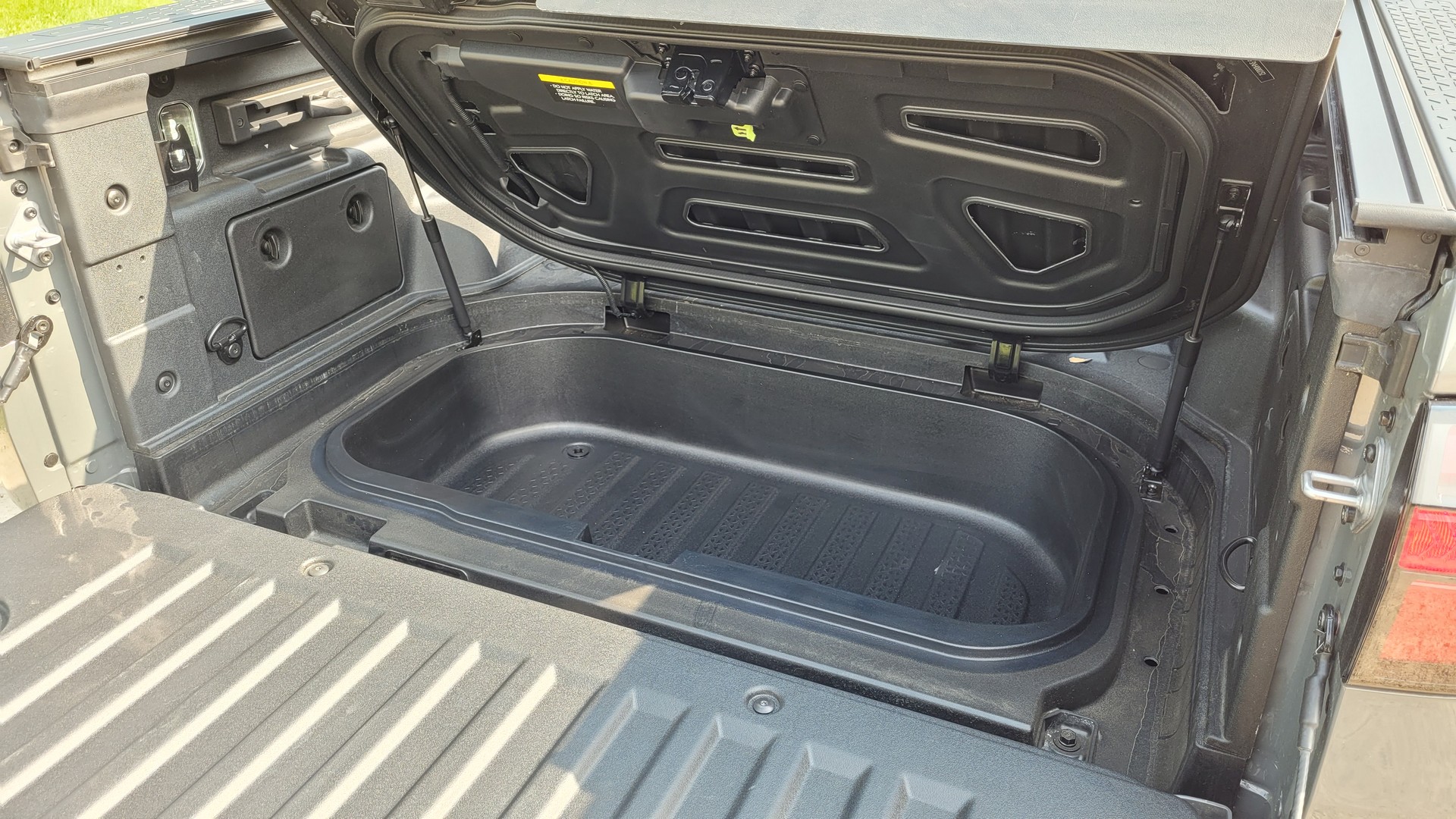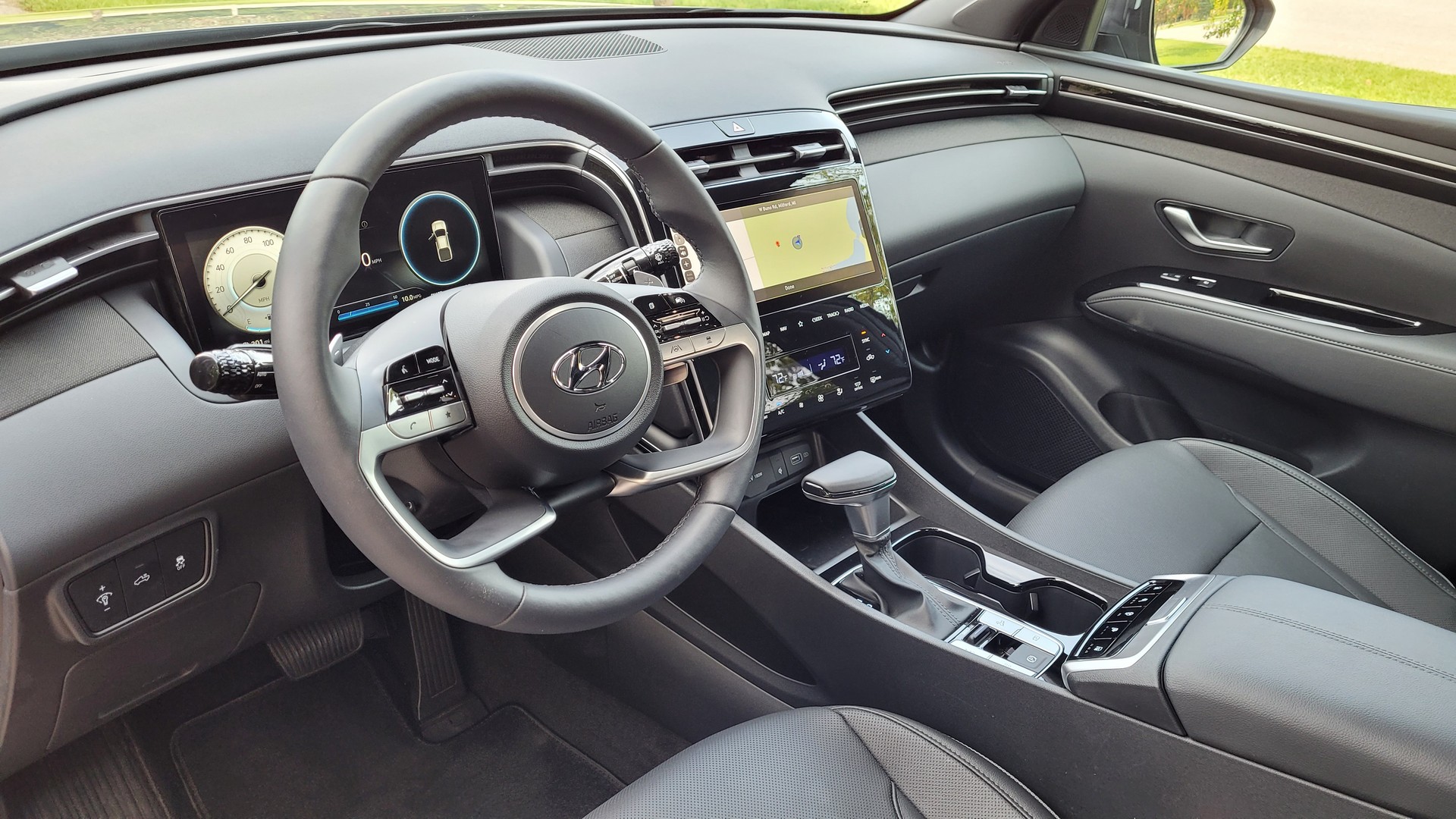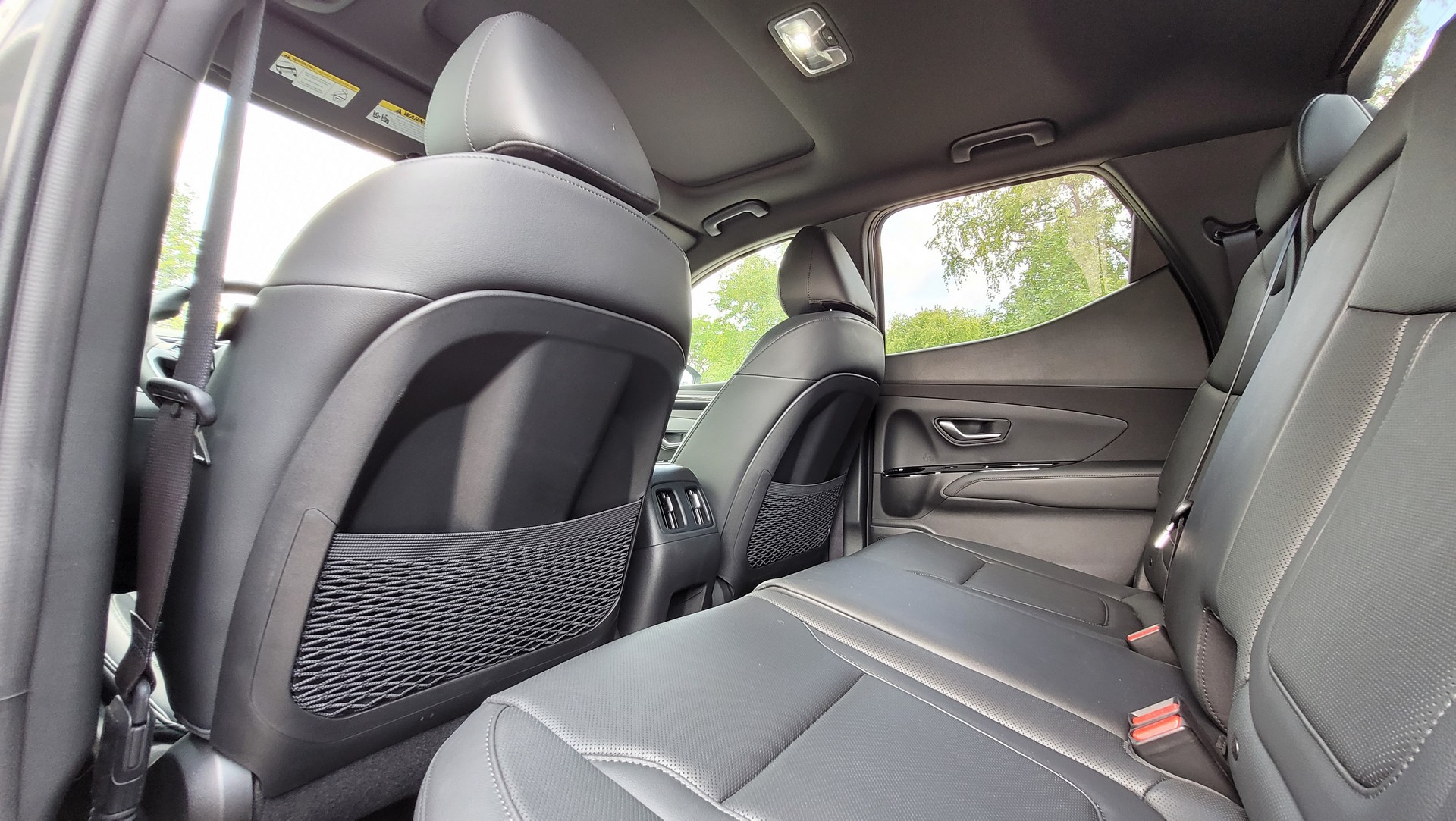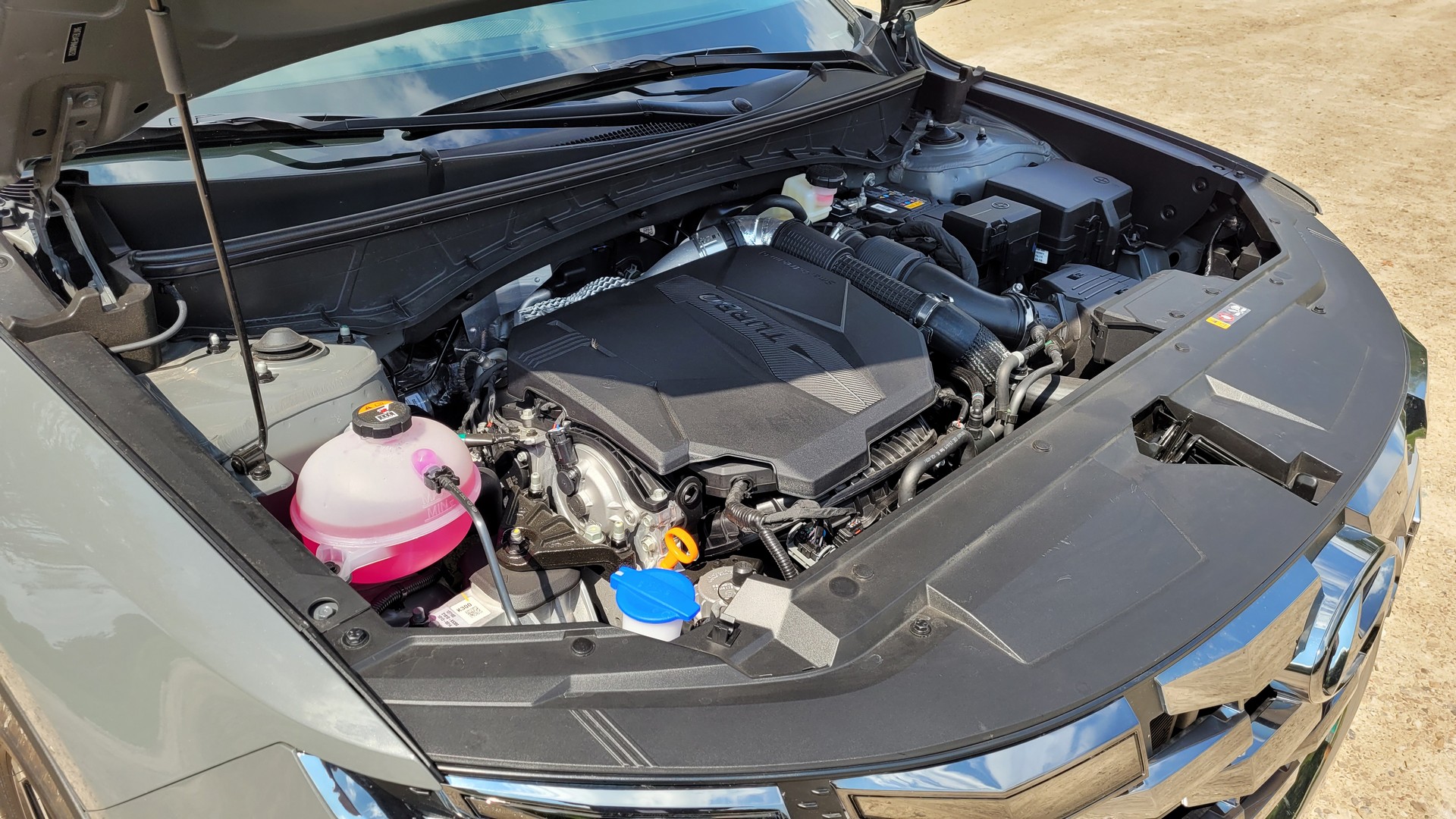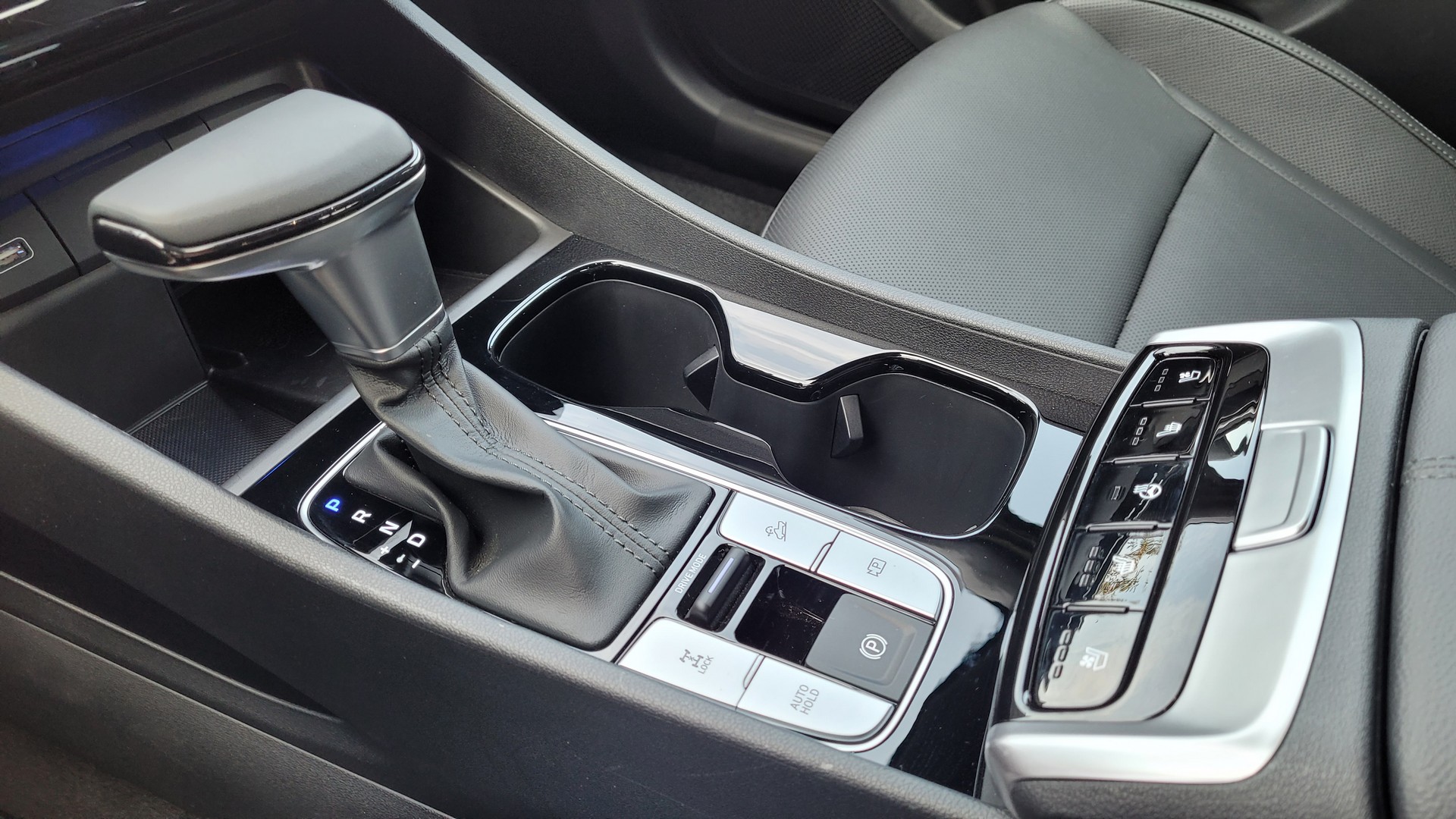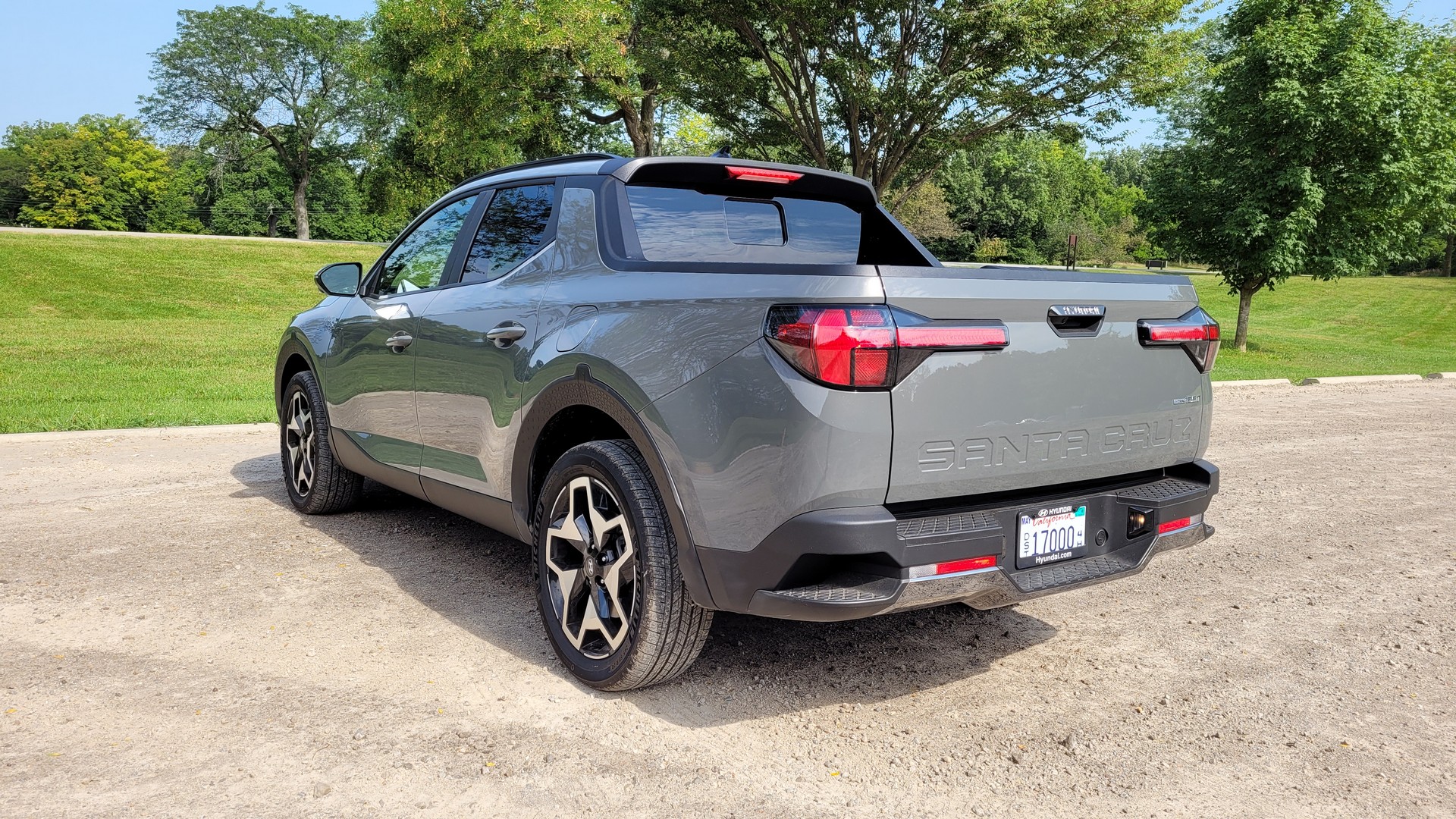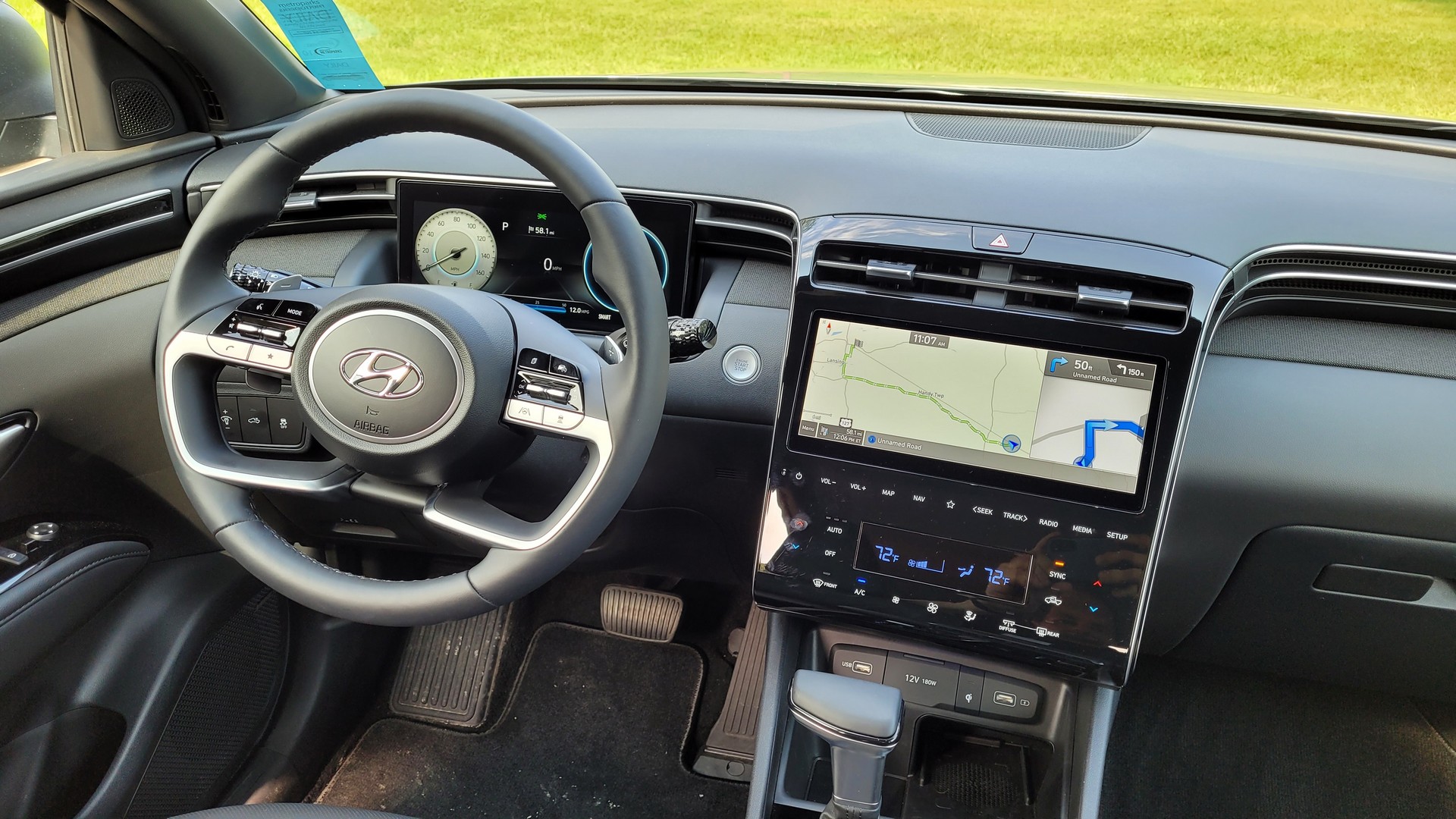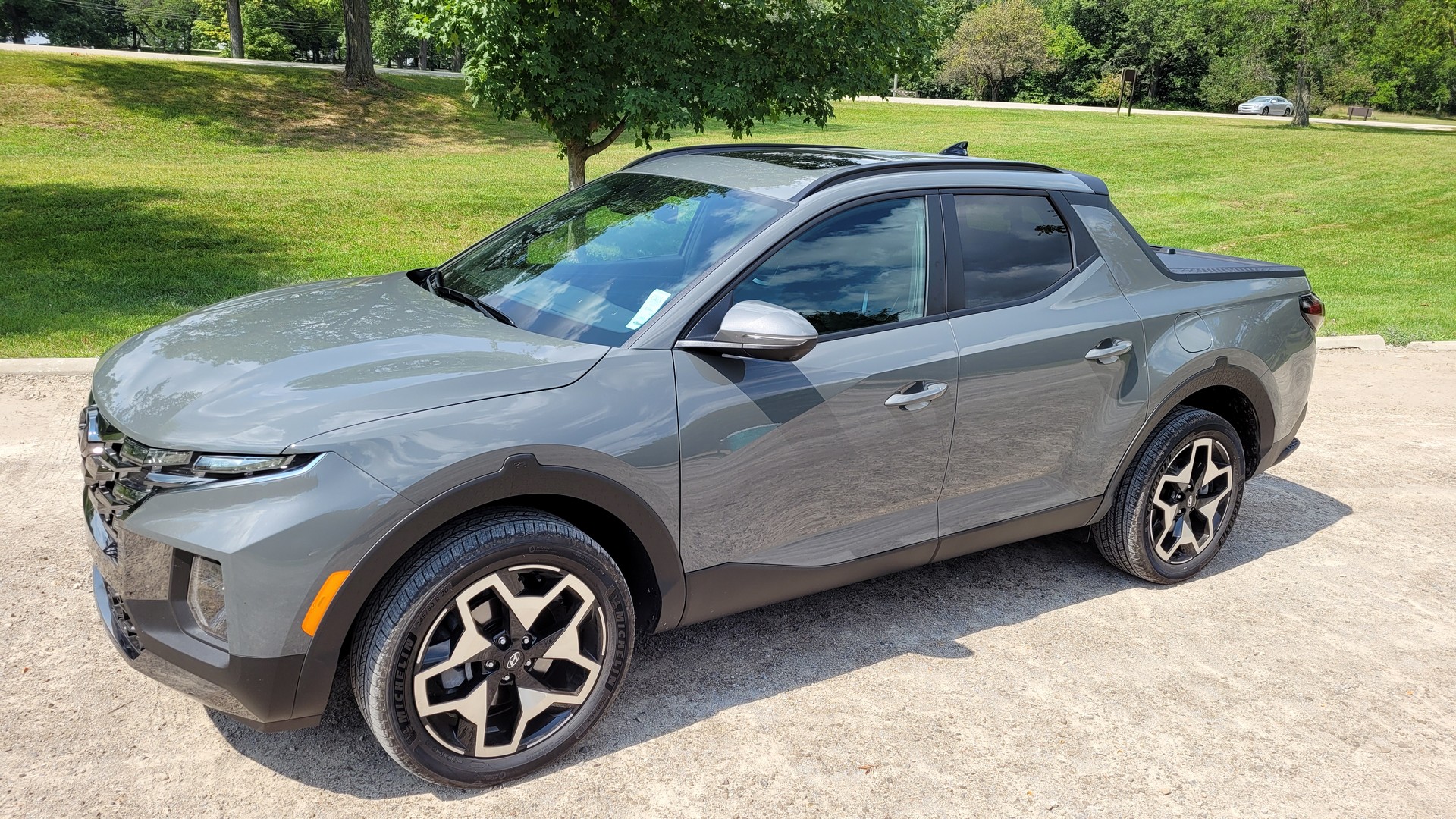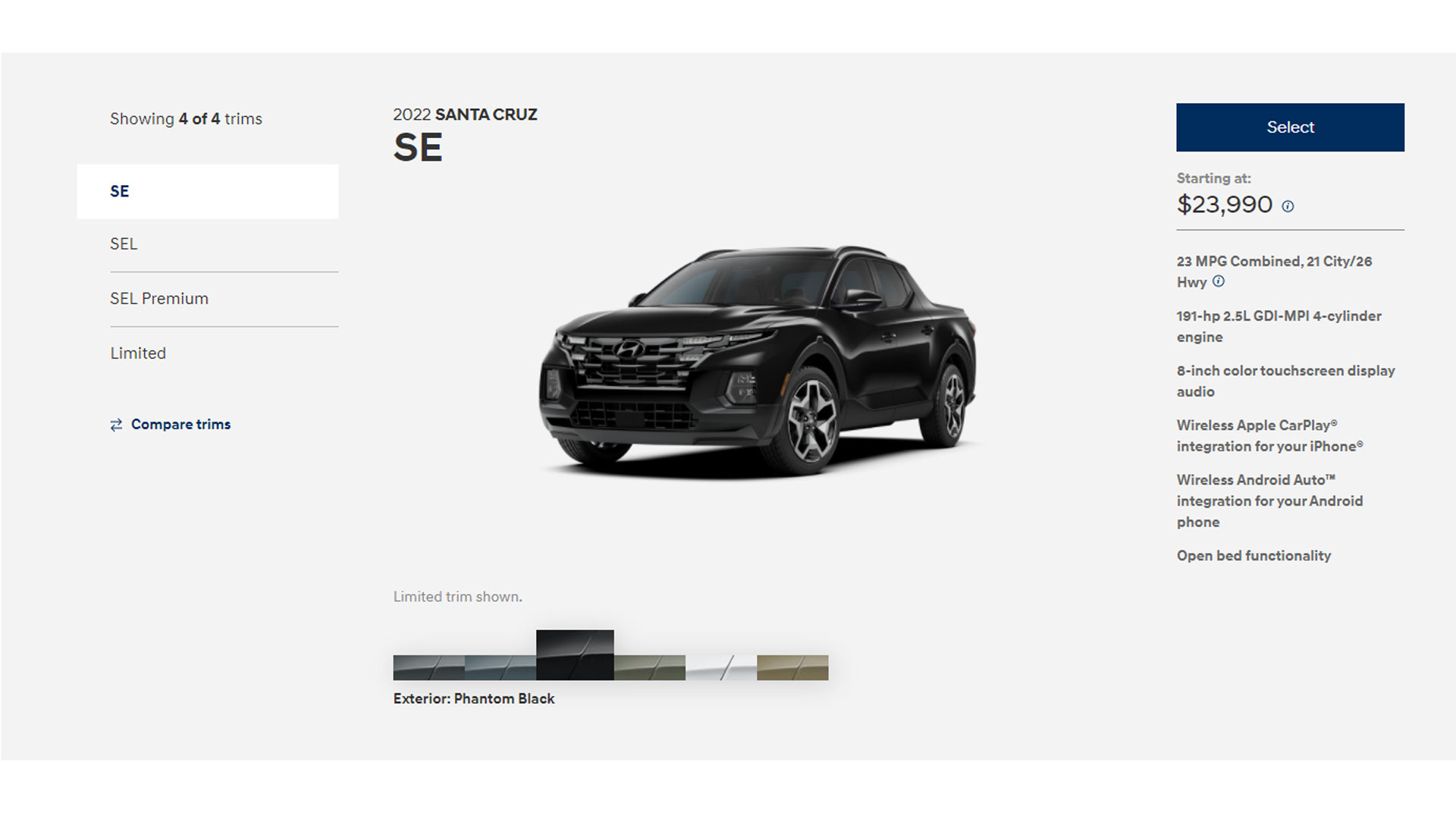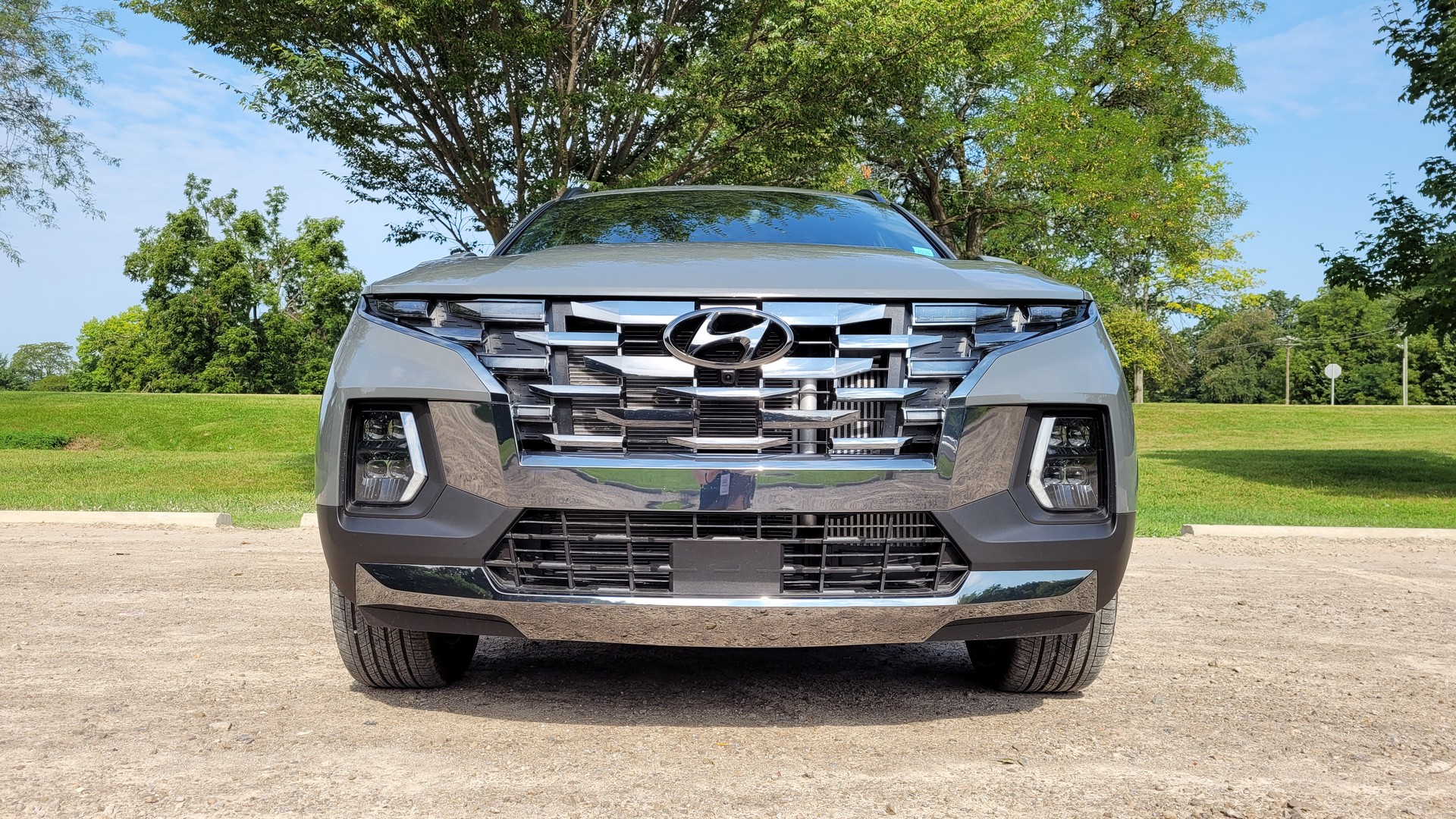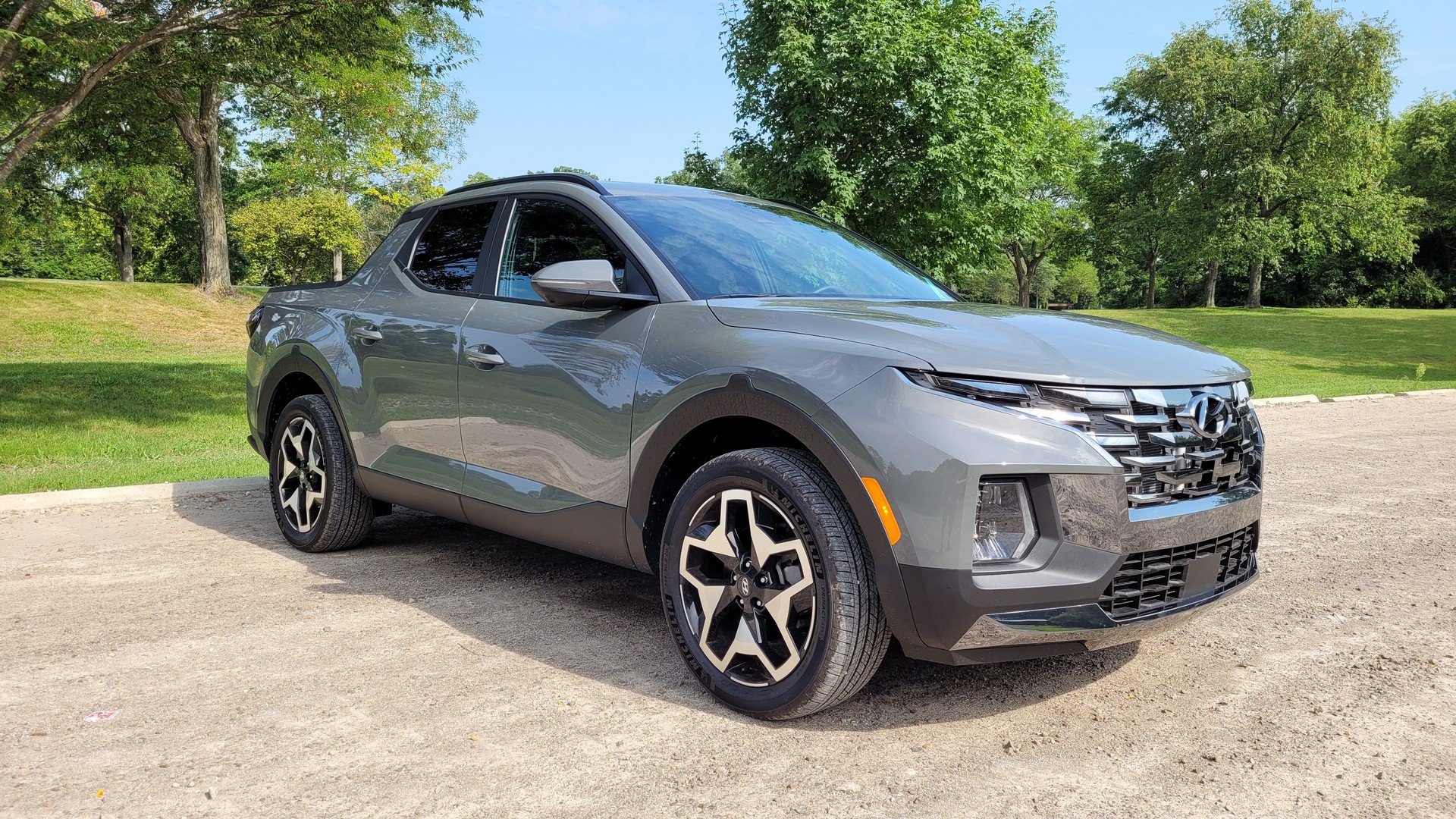When is a truck, not a truck? When it’s the 2022 Hyundai Santa Cruz. That’s not an insult as the company calls the model a “sport adventure vehicle” and refers to it as a “lifestyle crossover with an open bed.”
Despite the linguistic gymnastics, the Santa Cruz is by all intents and purposes a pickup. However, it’s so much more than a truck as it’s Hyundai’s first North American specific vehicle as well as one that was designed, engineered and built in the United States.
Hyundai Santa Cruz concept
It’s also been a long time coming as the Santa Cruz concept originally debuted at the 2015 North American International Auto Show. It was an instant hit, but the truck had a long road to production as it wasn’t feasible until Hyundai redesigned the Tucson and started building it in Montgomery, Alabama.
Thankfully, the wait seems to have been worth it as the Santa Cruz features an eye-catching design, an upscale interior and the driving dynamics of a crossover. It’s a true segment bender and one that will likely attract plenty of attention.
Designed To Stand Out
Most traditional pickups have a rather boring design, but the same can’t be said about the Santa Cruz as it boasts an angular and edgy aesthetic. The design immediately stands out, although it’s not as refined and elegant as the original Santa Cruz concept.
Another notable change is that the Santa Cruz is now a crew cab pickup with four proper doors. This was undoubtedly a smart decision as it makes the model far more practical and appealing to customers.
Sticking with the design, the truck features a bold grille with signature lights that are only visible when illuminated. They’re joined by halogen or LED headlights as well as standard LED daytime running lights.
Other notable features include 18- or 20-inch alloy wheels, standard privacy glass and an acoustic laminated windshield. Customers can also get a power moonroof and a sliding rear window. The latter helps for hauling longer items, but the opening is pretty small.
Since talk about the exterior wouldn’t be complete without mentioning dimensions, we’ll remind you the Santa Cruz measures 195.7 inches (4,971 mm) long, 75 inches (1,905 mm) wide and 66.7 inches (1,694 mm) tall with a wheelbase that spans 118.3 inches (3,005 mm). To put those numbers into perspective, the Santa Cruz is 16.5 inches (419 mm) shorter, 0.2 inches (5 mm) narrower and 4 inches (102 mm) lower than the Toyota Tacoma with a wheelbase that is 9.1 inches (231 mm) smaller.
That being said, the Santa Cruz’s toughest competition will come from the upcoming Ford Maverick. The two trucks are similarly sized, but the Hyundai is 4 inches (102 mm) shorter and 2.4 inches (61 mm) wider than the Blue Oval’s entry-level pickup. The Santa Cruz is also 2 inches (51 mm) lower and has a 2.8 inch (71 mm) smaller wheelbase.
A Bedtime Story
The most notable thing about the Santa Cruz is its sheet molded composite bed, which measures 52.1 inches (1,323 mm) long at its base. That’s significantly shorter than traditional mid-size trucks, but roughly on par with the Maverick.
While the small size limits the bed’s practicality, the model has an adjustable tailgate that aligns with the rear wheel wells to enable owners to haul 4’ x 8’ sheets of plywood. Speaking of the tailgate, it’s dampened by a gas strut and can be opened manually or via the key fob.
One of the more interesting things about the Santa Cruz is that it offers an integrated tonneau cover, which comes standard on the SEL Premium and Limited. It’s an OEM design, which features high quality construction and a flush appearance.
Besides looking good, it’s lockable and seems pretty secure when closed. While it probably wouldn’t stop a determined thief, it keeps the honest people honest while also serving as a deterrent to those with more questionable morals. On the other hand, the cover might be a nice addition, but its mechanism takes up a good bit of room in the bed. It can be removed, although the process seems a bit involved.
Getting back to the bed, it features side storage bins and an underfloor cargo area. The latter is lockable and features drain plugs, so you can throw wet items in there or use it as a cooler at your next bonfire.
Higher-end variants have a hidden 115V power outlet in the bed, while all models have D-rings and an adjustable rail system with cleats for securing cargo. The molded bed also promises to be dent and scratch proof, while access is improved by an integrated rear bumper with side steps. Last but not least, there are up to three LED lights that help you see what’s in the bed at night.
A Crossover-Like Cabin
While the Santa Cruz is unmistakably a pickup, you’d be hard pressed to tell by looking at the interior as it largely carries over from the Tucson. As you can see, the cabin features an upscale design that easily outclasses traditional pickups such as the Chevrolet Colorado and Ford Ranger.
That’s especially true in the range-topping Limited trim, which embarrasses the GMC Canyon Denali with a better design, modern technology and more high-end features. Speaking of the latter, the truck has heated and ventilated leather front seats with 8-way power adjustment on the driver’s side.
Those who opt for the Limited trim will also find a 10.25-inch digital instrument cluster and a matching 10.25-inch infotainment system with GPS navigation as well as traffic information. Other highlights include a heated leather steering wheel, a wireless smartphone charger, capacitive-touch controls and a Bose premium audio system. They’re joined by a dual-zone automatic climate control system, digital key technology, and a proximity key with remote engine start.
On top of that, there’s an alphabet soup of driver assistance systems including Forward Collision-Avoidance Assist with Pedestrian Detection, Blind-Spot Collision Avoidance Assist and Rear Cross-Traffic Collision Avoidance Assist. Other highlights include a Surround View Monitor, Lane Keeping Assist, Lane Following Assist, High Beam Assist, Safe Exit Warning and Navigation-Based Smart Cruise Control with Curve Control.
However, the most notable features are Blind-Spot View Monitor and Highway Driving Assist. The former shows a live video feed of what’s in your blind spot whenever you use your turn signal. It’s one of those features that is simply brilliant and I wish it would show up on additional models.
The other big news is Highway Driving Assist, which is a semi-autonomous driving system that makes traveling on the highway more relaxing. It combines adaptive cruise control with a lane centering function, so all you need to do is lightly hold the steering wheel and pay attention to the road ahead. As in other Hyundai Motor Group vehicles, the system works well and didn’t have any problems keeping the truck centered in its lane even in curves.
Putting the technology aside, it’s easy to get comfortable in the Santa Cruz as the model features supportive front seats with plenty of head and legroom. Despite the truck’s compact dimensions, the rear seats promise to be pretty accommodating as there’s 36.5 inches (927 mm) of legroom. However, knee room is tight for adults and the front seat backs are covered in hard plastic. That being said, you can easily spread your legs and get comfortable.
Speaking of the rear seats, the bottom cushions flip up to reveal a hidden storage compartment. Rear seat passengers will also find cup holders on the door panels as well as USB ports and air vents on higher-end variants.
Overall, the cabin feels more like a crossover than a pickup. While there is a lot of hard plastic, it’s nicely grained and has a premium appearance. Buyers will also find gloss black trim and metallic accents, which help to spruce things up.
Two Engines Including A Turbo
Under the hood, there are two different engines including an entry-level 2.5-liter four-cylinder that produces 191 hp (142 kW / 194 PS) and 181 lb-ft (245 Nm) of torque. It’s connected to an eight-speed automatic transmission, which can power either the front or all four wheels.
While we didn’t have the opportunity to test the base engine, most buyers will likely want to upgrade to the turbocharged 2.5-liter four-cylinder that develops 281 hp (210 kW / 285 PS) and 311 lb-ft (422 Nm) of torque. It’s paired to an excellent eight-speed dual-clutch transmission and this setup gives the Santa Cruz effortless acceleration.
It’s also worth mentioning the turbocharged engine outshines the optional 2.0-liter EcoBoost four-cylinder in the Maverick. That engine produces 250 hp (186 kW / 253 PS) and 277 lb-ft (376 Nm) of torque, which is 31 hp (23 kW / 31 PS) and 34 lb-ft (46 Nm) less than the Hyundai. However, it’s important to note the Maverick is hundreds of pounds lighter.
Speaking of the turbocharged engine, it has an added benefit besides improved performance. In particular, it enables the Santa Cruz to tow up to 5,000 lbs (2,268 kg) when equipped with all-wheel drive. That’s 1,500 lbs (680 kg) more than the standard engine and 1,000 lbs (454 kg) more than the mightiest Maverick with the tow package.
Hyundai engineers paid special attention to towing as they tested the Santa Cruz in extreme temperatures, in high elevations and even in overloaded condition. They also used the truck to tow everything from campers to trailers to boats, so it can handle pretty much everything that owners throw at it.
Getting back to the all-wheel drive system, it allows for all-weather traction as well as light off-roading. It actively distributes torque between the front and rear axles, depending on conditions. It’s also worth noting that putting the truck into Sport mode will send more torque at the rear to allow for a sportier and more dynamic driving experience.
Speaking of off-road capability, the Santa Cruz has 8.6 inches (218 mm) of ground clearance as well as approach, departure and breakover angles of 17.5˚, 23.2˚ and 18.6˚ respectively. Those numbers aren’t anything to write home about, but bear in mind that it is a lifestyle vehicle and not a hardcore off-roader.
In terms of fuel efficiency, the entry-level engine returns 21 mpg city, 26 mpg highway and 23 mpg combined with front-wheel drive. Interestingly, adding all-wheel drive actually improves consumption a bit as the model gets 27 mpg highway, while the city and combined ratings remain unchanged.
Of course, most people will want the turbocharged engine and thankfully it doesn’t have much of a penalty at the pump. While the front-wheel drive variant won’t arrive until early next year, the all-wheel drive model has an EPA rating of 19 mpg city, 27 mpg highway and 22 mpg combined. That’s only 2 mpg less city and 1 mpg less combined than the naturally aspirated model with all-wheel drive.
It Looks Like A Truck, But Certainly Doesn’t Drive Like One
While traditional trucks are body-on-frame, the Santa Cruz features unibody construction and this pays big dividends in terms of ride quality and driving dynamics. The model also sports a MacPherson strut front suspension with coil springs as well as a multi-link self-leveling rear suspension.
This setup enables the Santa Cruz to have an excellent ride quality that is on par with crossovers. This is especially true on the highway, where it doesn’t feel like you’re driving a truck at all. Thanks to a comfortable ride and Highway Driving Assist, the Santa Cruz would make for a great long distance travel companion.
Things aren’t quite as nice off the highway as there is body roll during cornering and some slight jostling. Of course, this is relatively minor and to a far less degree than in traditional pickups.
Handling is also crossover-like, but not quite as good. However, it’s impressive for a pickup and the model feels stable unless you really push it.
Thanks to the truck’s small dimensions, the Santa Cruz is pretty maneuverable even in tight parking lots. More specifically, it has a turning circle of 39.6 feet (12.1 meters), which is a foot (30 cm) less than the best Toyota Tacoma and nearly 3 feet (91 cm) better than the Ranger. It’s also slightly less than the Maverick’s rating of 40 feet (12.2 meters).
Another plus is the steering, which is responsive and nicely weighted. It’s also worth mentioning Sport mode adds heft, although Normal is perfectly fine and Smart will adjust between modes for you.
Lastly, there’s the braking system which features 12.8 inch (325 mm) discs at all four corners. They’re capable of the task at hand, but didn’t seem overly remarkable.
Pricing Starts At $23,990
While we’ve already covered pricing in a previous post, we’ll remind you the Santa Cruz starts at $23,990 before a $1,225 destination charge.
The entry-level SE variant comes modestly equipped, but features 18-inch alloy wheels, rear privacy glass, and a composite bed with hidden storage compartments as well as tie downs. Buyers will also find air conditioning, power windows / locks, a 4.2-inch multi-information display and an 8-inch infotainment system with Android Auto and Apple CarPlay compatibility. Other niceties include a remote keyless entry system and a rearview camera with dynamic guidelines.
The model also comes equipped with driver assistance systems such as Forward Collision Avoidance-Assist with Pedestrian Detection, Lane Keeping Assist, Lane Follow Assist and High Beam Assist.
Moving up the trim ladder is the $27,190 Santa Cruz SEL. It adds an 8-way power driver seat, heated front seats and Blue Link connectivity. Other highlights include a proximity key, Blind Spot Collision-Avoidance Assist and Rear Cross Traffic Collision-Avoidance Assist.
Front-wheel drive comes standard on both the SE and SEL, but all-wheel drive is available for an additional $1,500.
Continuing upwards is the $35,680 SEL Premium with all-wheel drive. It features a turbocharged engine as well as LED headlights, body-color door handles and digital key technology. More importantly, there are a number of upgrades for the bed including the integrated tonneau cover, two additional lights and a 115V power outlet.
Those features are joined by a 10.25-inch digital instrument cluster, a dual-zone automatic climate control system and a wireless smartphone charger. There’s also a leather-wrapped steering wheel with paddle shifters and an auto-dimming rearview mirror with HomeLink.
That brings us to our Limited AWD tester, which starts at $39,720. It features a slightly revised exterior with dark chrome accents, rain-sensing wipers and 20-inch alloy wheels. Inside, there are 10.25-inch displays, a heated steering wheel and heated / ventilated front seats.
The range-topper boasts voice recognition technology, an ambient lighting system and a Bose premium audio system. There are also additional safety features including Smart Cruise Control with Stop/Start, Highway Driving Assist, Intelligent Speed Limit Assist and a Surround View Monitor.
More Than Enough Truck For Most People
I’m a sucker for strange statistics and one that struck me recently was many truck owners only use their bed a few times a year. That probably shouldn’t be surprising as most homeowners only need it for picking up furniture or making a run to Home Depot.
If you only need a truck bed on occasion, why not get a vehicle that features a comfortable ride, a high-tech interior and good driving dynamics? When you think about it that way, the Santa Cruz makes a lot of sense and is undeniably appealing as it excels in areas where traditional pickups fall short. It’s also worth noting that it has a respectable towing capacity and an impressive turbocharged engine.
While there are some tradeoffs, the Santa Cruz is a good mix of crossover and truck. It won’t suit everyone, but it’s not trying to and that’s why Hyundai avoids calling it a pickup.
As you’ve probably noticed, we’ve mentioned the Maverick a lot in this review and it’s undeniably the elephant in the room as Ford has already received over 100,000 reservations. That’s an impressive number and it shows there’s a lot of enthusiasm for compact pickups. While we won’t be driving the Maverick until later this year, reservation holders might want to mosey down to their local Hyundai dealer and check out the Santa Cruz while they wait.
